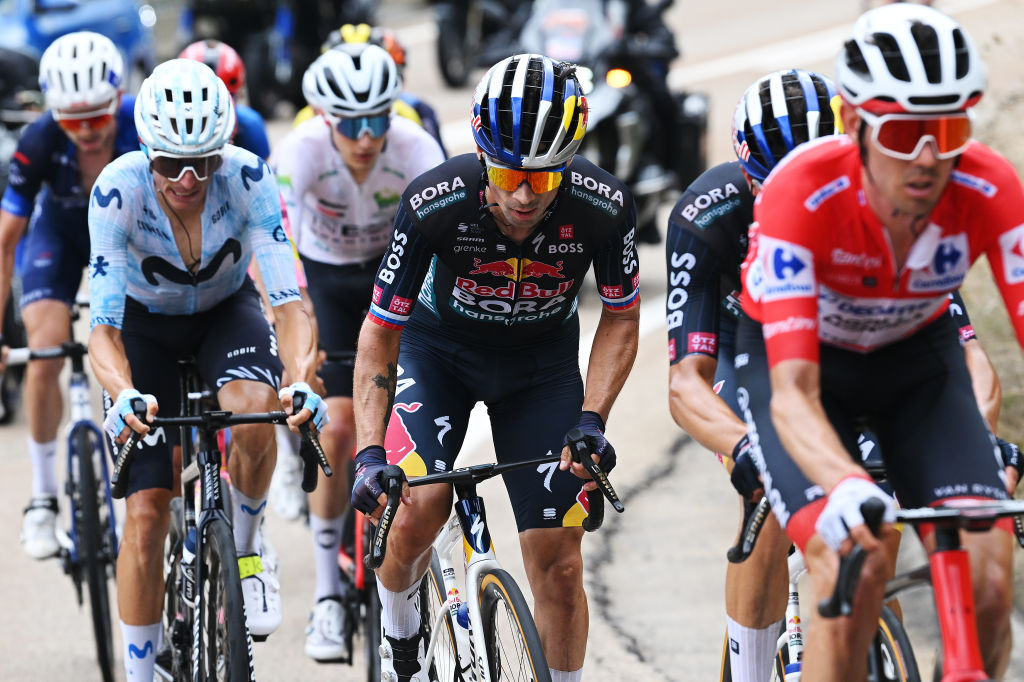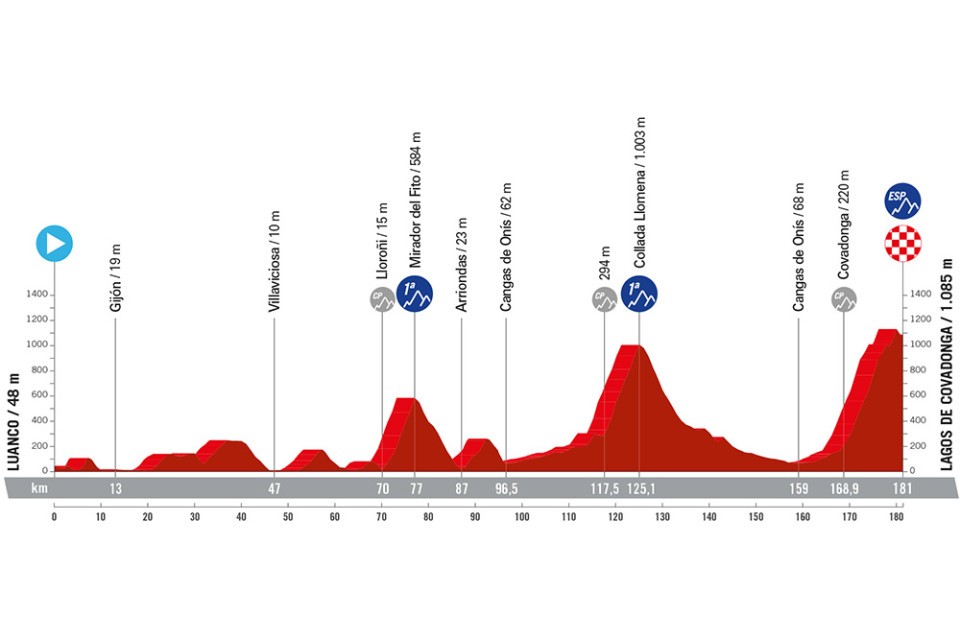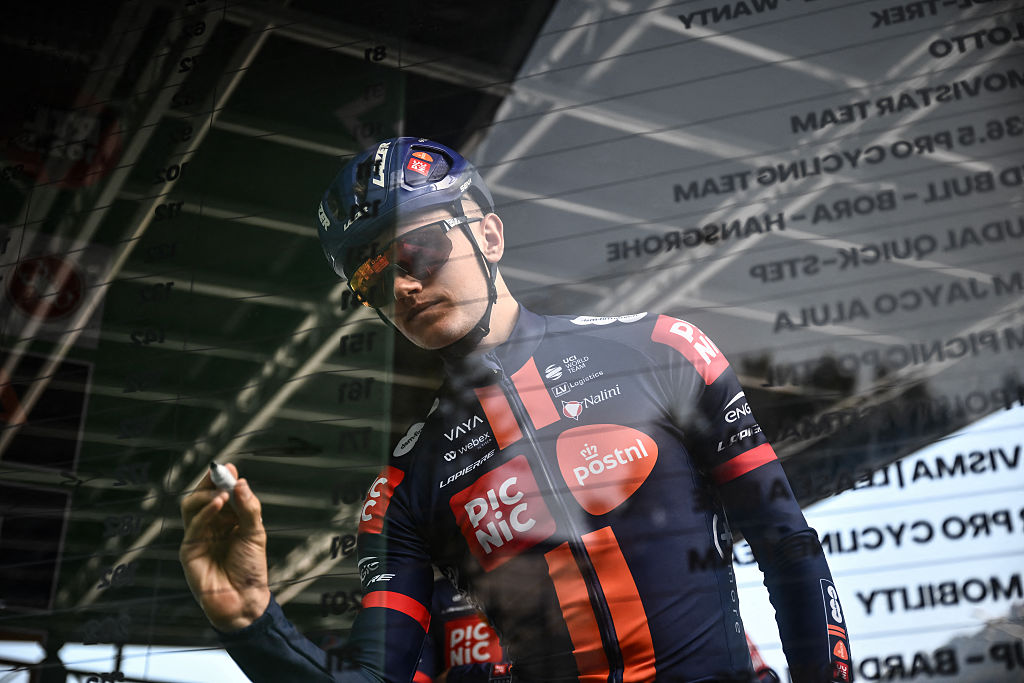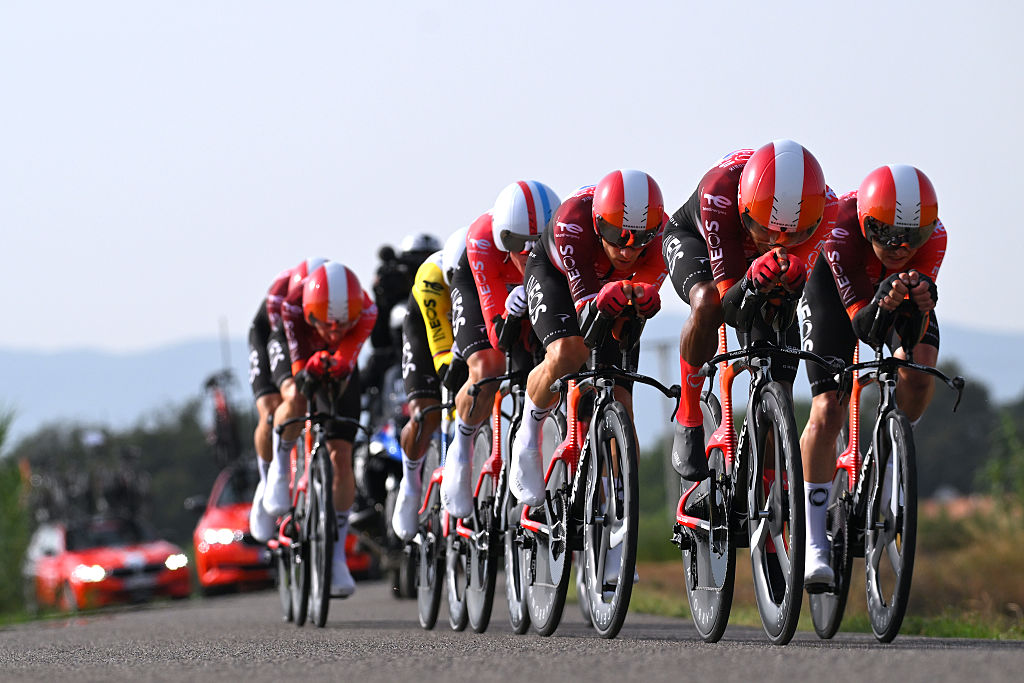Vuelta a España 2024 stage 16 preview - Primož Roglič aims for repeat 'reconquest' of race lead at Lagos de Covadonga
September 3, 2024: Luanco-Lagos de Covadonga, 181km

Nestling at the foot of the Lagos de Covadonga climb there’s an important pilgrimage site and basilica church, built in commemoration of the battle fought there in 718 AD that is viewed as the starting point of the centuries-long military Reconquista [reconquest] of Spain.
Fast forward to the 2024 Vuelta a España and Primož Roglič is hoping the same summit finish deep in the northerly Picos de Europa mountain chain will also play host on Tuesday to a very different kind of reconquista: that of the leader’s red jersey, lost by Roglič on stage 6 to Australian Ben O’Connor and which the Slovenian has been chasing down ever since.
Pre-stage, this scenario bears a striking similarity to the situation before the 2021 Vuelta Covadonga stage. That day, Roglič launched a devastating long-distance breakaway alongside Ineos Egan Bernal some 60 kilometres before the Covadonga summit. Having dispatched Bernal with 7.5 kilometres to go, Roglič soloed to victory and not only regained the red jersey he’d ceded to non-GC threat Odd Christian Eiking a week earlier and 1,200 kilometres distant, on the southern side of Spain: By the time he reached the rainsoaked summit of Covadonga, his reconquista of the Vuelta was all but complete and he'd effectively won the race outright.
But if Eiking had held onto the leader's jersey much longer than expected, just as O’Connor has done this time round, that’s as far as the similarities go. Unlike the Norwegian four years ago, O’Connor is a recognised GC challenger, and every prediction so far that Ben O’Connor will irrevocably lose red - at Sierra Nevada on stage 9, at Ancares on stage 13 and at Cuitu Negru on stage 15 - has proved to be radically inaccurate.
This brings the 2024 Vuelta to stage 16 and its 23rd ascent of Lagos de Covadonga and where hopes are high amidst Roglič fans and his team that the Slovenian will once again, as per 2021, deliver a knock-out verdict in the overall classification.
Should he do so, history would certainly be on Roglič's side in terms of taking the final victory. In five of the last six occasions that Covadonga has been tackled by the Vuelta, including 2021, of course, the leader of the race at its summit has - in keeping with the urban legend about Covadonga's ability to definitively decide the Vuelta overall - also gone on to be the outright winner.
Quite apart from Roglič in 2021, six years ago, Simon Yates was in red at Covadonga and went on to triumph overall. Furthermore, in 2016, with Nairo Quintana (also the stage winner), 2014 with Alberto Contador and 2010 with Vincenzo Nibali, that was also the case. The only exception in the last half dozen ascents was Joaquim Rodriguez in 2012, leading the Vuelta at Covadonga but then ambushed in dramatic fashion by Contador at Fuente De a few days later.
The latest race content, interviews, features, reviews and expert buying guides, direct to your inbox!
Yet if Roglič sounded cautious about his chances of success this week in his rest day press confidence, he’s probably right to be, and not only because of his own uneven climbing performances so far in the 2024 race. Like the wild wolves that have famously roamed across much of the area for centuries, the stage 16 summit finish of the Lagos de Covadonga has developed a well-earned reputation for being a tough, somewhat unpredictable beast to tackle, with a fierce bite if approached too confidently.
That’s because Lagos de Covadonga might have lost its unofficial status as Spain’s hardest climb in 1999 when the even more demanding road up the nearby Angliru was tarmacked and then quickly introduced into the Vuelta route. Covadongac certainly lacks the side-of-a-house steepness of the Angliru and it is well-tarmacked throughout and never excessively narrow, too. But its wildly varying gradients still make the winding ascent to the twin lakes of Enol and Encina at Lagos summit extraordinarily hard to tackle.
Across its 14 kilometres, there are three really tough segments. First off is the Mirador de los Canonigos, which comes after three kilometres, and although not really steep, this is the first time the road really starts to climb, with gradients of 10 per cent. Then there’s the Huesera [which translates somewhat ominously as the bonesetter] the hardest part of the climb with gradients of around 15 per cent and even 20 per cent, for about 800 metres. That’s roughly halfway up.
Finally, there is the Mirador de la Reina segment. This is almost equally difficult as the Huesera, and comes just before the climb’s final three rollercoaster kilometres of flat and descent, leading to the last little kick up to the finish.
What makes Covadonga so challenging, then, is not so much its gradients in themselves as the climb’s changes in degrees of difficulty. Some segments of the climb rear skywards, others ease back to being virtually flat or briefly head downhill. Unlike more brutally hard ascents like the Angliru where the strategy boils down to hitting as low a gear as possible and praying you’ll get up it without cracking, Lagos de Covadonga’s near-constant changes of pace make it very tricky to calculate your effort, even if you know the climb well.
Yet, although Covadonga has proved impressively accurate at providing indicators as to the outright winner in the past, the gaps between the favourites have not always been large.
On the third week stage of the 2018 Vuelta, for example, there were just five seconds between Yates and the slowest of his main challengers, Nairo Quintana. In 2016, Quintana’s advantage on Chris Froome, his most serious rival for la roja, was a scant 26 seconds. In 2014, the three top names of Alejandro Valverde, Froome and Contador were separated by an equally paltry 12 seconds.
However, the one exception to these minimal gaps was provided by Roglič himself in 2021, whose winning margin of 1:35 on his closest pursuer was nine seconds faster than the previous record of 1987, when Lucho Herrera, one of three double winners on the climb, enjoyed a 1:26 advantage on Vicente Belda. So, much variety in the time gaps, though, surely points to another of Covadonga's attractions. Unlike the Angliru, all but doomed to create a lone breakaway winner it is so hard, on the Covadonga all sorts of outcomes are possible - including, of course, a time loss against his rivals for the man who dominated Covadonga so convincingly in 2021.
Lagos de Covadonga’s status in the Vuelta is not just about who wins the race outright, in any case. In 1983, it also represented a landmark in the Vuelta’s history as an entity. That was because, after years of declining prestige and steadily weakening financial resources, that April’s ascent of Lagos de Covadonga was the first time the Vuelta had its whole last hour broadcast live on TV, both in Spain and abroad. This vastly widened media exposure is generally seen as the point when the Vuelta, having touched bottom in the late 1970s, began its long climb back up to the level of international recognition it enjoys today.
So whether Primož Roglič finally takes back la roja and sets himself up for a record-equalling fourth victory or if Ben O’Connor continues his tenacious defence of the red jersey or if yet another scenario emerges on Tuesday, just like Alpe d'Huez in France or the Mortirolo in Italy, Covadonga’s towering significance and prestige in the Vuelta a España will remain more than intact. It already matters too much to the Vuelta for any other outcome to be possible.
Stage 16 information

The Vuelta’s second rest day offers only a temporary respite from the rigours of racing in Asturias, with a very familiar foe waiting for the peloton as they resume. Lagos da Covadonga has become one of the holy sites of Spanish cycling since it was first included on the Vuelta route back in 1983, and this year marks the 23rd time the ascent has featured.
Marino Lejarreta, Philippa York, Pedro Delgado, Luis Herrera, Oliverio Rincón, Laurent Jalabert, Pavel Tonkov and Thibaut Pinot all feature on the star-studded roll of honour. The last rider to inscribe his name here was Primoz Roglic, who all but sealed his third overall victory in 2021 with his daring long-range raid on the road to Lagos da Covadonga.
This time out, the special category finale is preceded by two category 1 ascents. The Mirador del Fito is followed by the Collada Llomena, which was the scene of Roglic and Egan Bernal’s dramatic escape back in 2021.
The centrepiece of the stage, of course, is that grand finale to Lagos da Covadonga, which climbs for 12.5km at 6.9%. That average is tempered by a pair of short descents, but for the most part, this climb is a brute, with maximum gradients of 16%. The rider in red at the summit has every chance of carrying the jersey to Madrid.
Alasdair Fotheringham has been reporting on cycling since 1991. He has covered every Tour de France since 1992 bar one, as well as numerous other bike races of all shapes and sizes, ranging from the Olympic Games in 2008 to the now sadly defunct Subida a Urkiola hill climb in Spain. As well as working for Cyclingnews, he has also written for The Independent, The Guardian, ProCycling, The Express and Reuters.
Latest on Cyclingnews
-
Oscar Onley signs for Ineos Grenadiers, cutting short Picnic PostNL contract after Tour de France breakthrough
Scottish rider completes British team's line-up for 2026 after Dutch squad fail to hold off rival offers -
Superprestige Heusden-Zolder: Tibor Del Grosso surges past Wout van Aert at the line for a signature elite victory
Michael Vanthourenhout sprints ahead of series leader Niels Vandeputte to secure third place -
Superprestige Heusden-Zolder: Amandine Fouquenet solos away for surprise victory
Blanka Vas second, Aniek van Alphen third on super-fast, technical course -
Ineos Grenadiers create 'new talent pathway' in deal involving Tom Pidcock's former junior team
Announcement follows recent news of formation of Ineos U23 development squad




